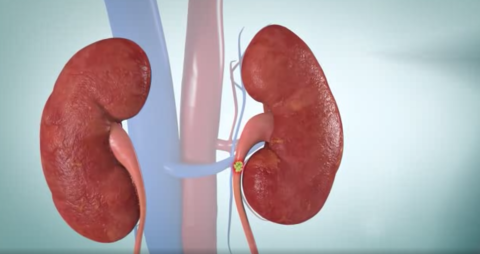Detecting kidney stones typically involves a combination of clinical evaluation, imaging techniques, and sometimes laboratory tests.

Here are the common diagnostic methods used:
- Symptom Assessment and Medical History: The first step is often a detailed discussion about the patient’s symptoms. Symptoms such as severe pain in the side and back, blood in urine, nausea, and vomiting are indicative and help narrow down the diagnosis.
- Physical Examination: A physical examination can provide additional clues, such as tenderness in the abdomen or lower back.
- Imaging Tests:
- CT Scan (Computed Tomography): This is the preferred imaging method for detecting kidney stones due to its high sensitivity and specificity. It can accurately locate the stones, determine their size, and assess complications like obstruction.
- Ultrasound: Particularly useful in pregnant patients or when avoiding radiation exposure is a concern. Ultrasound can detect larger stones but may miss smaller ones or those located in certain parts of the urinary tract.
- X-ray: Used less frequently now due to its limitations in detecting all types of stones, but can still be used in certain cases, especially if a CT scan is not available.
4. Laboratory Tests:
- Urinalysis: Detects blood in the urine (hematuria) and can also identify signs of infection or abnormal pH levels that may contribute to stone formation.
- Blood Tests: These may be done to assess kidney function and evaluate for conditions that predispose to stone formation, such as hyperparathyroidism.
5. 24-Hour Urine Collection: In some cases, a 24-hour urine collection may be requested to analyze the levels of stone-forming substances like calcium, oxalate, uric acid, and citrate. This helps in planning preventive strategies to reduce the risk of future stone formation.
6. Intravenous Pyelogram (IVP): While less commonly used now due to the availability of CT scans, an IVP involves injecting a contrast dye into a vein, which is filtered by the kidneys and excreted into the urinary tract. X-rays are then taken to visualize the flow of urine and any obstructions caused by stones.
Each diagnostic method has its advantages and limitations, and the choice of which method to use depends on factors such as the patient’s symptoms, medical history, availability of imaging equipment, and the clinical judgment of the healthcare provider. Early and accurate diagnosis is crucial for timely management and prevention of complications associated with kidney stones.
Comments
Post a Comment